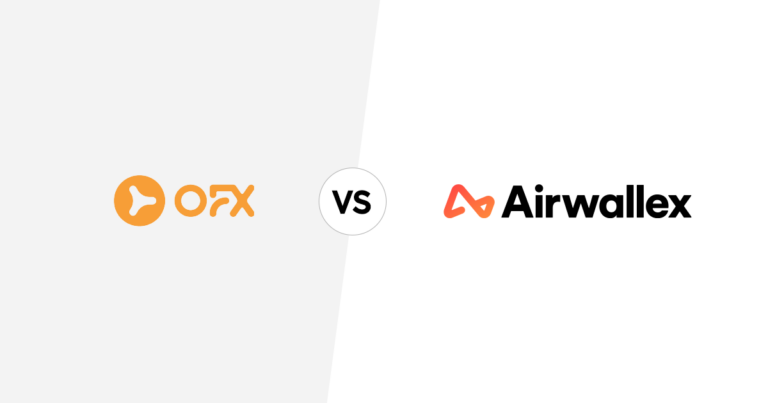10 Dos & Don’ts Of Small Business Finance

This article covers:
- What Is A ‘Small Business’?
- What Is Small Business Finance & Why Is It Needed?
- Types Of Small Business Finance
- What Are Some Dos & Don’ts Of Small Business Finance?
- 1. DO Your Homework
- 2. DO Keep Track Of Your Records
- 3. DO Explore Your Options
- 4. DO Borrow The Right Amount At The Right Time
- 5. DON’T Over Or Underestimate ANYTHING
- 6. DON’T Forget Your Elevator Pitch
- 7. DON’T Let Financial Worries Overwhelm You
- 8. DON’T Be Afraid To Take Risks
- 9. DON’T Forget To Pay Your Taxes
- 10. DON’T Go For The Obvious
- What is small business finance?
- What is a small business?
- Why is it needed?
- What are its pitfalls?
- What are some of the dos and don’ts entrepreneurs need to consider before applying for small business financing?
These are some of the many questions this article will try to answer for small business owners looking for advice on financing options.
What Is A ‘Small Business’?
A small business is usually a:
- Privately-owned company or
- Sole proprietorship or
- Partnership or
- Family-owned firm
By its very nature, a small business has less revenue (and therefore profit), fewer employees, fewer owners and a smaller scope of operations than a larger company that is publicly-owned or otherwise.
However, these values usually depend upon the industry, so it is not possible to apply a one-size-fits-all definition to small businesses. In other words, what qualifies as a small business in one industry may not qualify as a small business in another.
What Is Small Business Finance & Why Is It Needed?
‘Small business finance/small business funding/start-up finance’
Irrespective of the term you use, the meaning remains the same – this is the money a businessperson would need to:
- Set up their small business
- Purchase an existing small business or
- Finance current or future growth
External finance can also help a small business to:
- Cover cash flow gaps caused by delays in customer receipts (or any other reason)
- Maintain equipment or increase inventory to take advantage of a sudden market opportunity
- Meet a sudden (or seasonal) demand for its product or service
- Repair damage due to an expected natural emergency (e.g. an earthquake)
It is possible for small business owners to do any of the above with their own money, also known as an out-of-pocket expense. However, it is usually more prudent to arrange external financing through one of the many available options.
Types Of Small Business Finance

Small business finance can take a number of forms: debt and equity being the most common.
1. Debt/Credit: This is a type of business financing where you borrow money, i.e. you take a loan from a lender and pay it back with interest later.
Types of small business debt:
i. Short-Term Loans: These are usually given for smaller amounts and shorter time frames. Because they are usually used for emergencies or to meet one-off expenses and are disbursed fairly quickly. They tend to be more expensive as they are offered at a higher interest rate than medium or long-term loans.
ii. Medium-Term Loans: These are usually available to more established businesses with specific goals such as expansion, new product launches, new marketing or advertising campaigns, etc. These loans are for larger amounts, and have longer term lengths and lower interest rates than short-term loans.
iii. Business Line Of Credit (LOC): With an LOC, also known as revolving LOC, a business owner gets ready access to a pool of funds. They pay interest only on the amount actually used. This option offers low interest rates, flexible repayment terms and access to a large pool of capital, but the repayment penalties can be quite harsh.
iii. Business Credit Card: Some business credit cards offer high credit limits, special deals for small businesses and flexible repayment options. They may also allow small business owners to borrow funds at 0% annual percentage rate (APR) for a few months. However, borrowers with a strong credit score and a solid business record may get higher loans through other avenues.
iv. Asset-Based Loans: Small business owners may apply for loans by putting up assets like equipment or inventory as collateral against the borrowed amount. The collateral may be seized if the borrower is unable to repay the loan.
v. Microloan: For small business owners with no assets or prior credit history, getting a commercial bank loan may be difficult. In such cases, they can apply for a microloan from a microlender, who may be willing to offer small loans with less documentation and more flexible underwriting criteria than traditional banks.
2. Equity: When a business owner opts for equity financing, he doesn’t have to repay any money (capital) or pay interest. Instead, they offer investors a percentage stake in their business in exchange for some of the investors’ cash.
The 3 main types of equity investors are:
i. Angel Investors: These are individual investors who usually invest in small businesses or start-ups. They may be experienced investors or industry experts, and may provide guidance to the business owner in exchange for some decision-making power and a stake in the business.
ii. Venture Capitalists (VC): A VC firm also invests in start-ups and growing businesses in return for equity in the business. Unlike angel investors, VC firms usually disburse capital in multiple rounds, negotiating with borrowers for greater equity in exchange for more capital.
iii. Private Investors: Family and friends of small business owners often invest in the business, but because this path mixes personal relationships with financial ones, the potential for relationship disaster is huge. Therefore, borrowers must exercise caution before choosing this financing path.
3. Other Types Of Small Business Financing
i. Crowdfunding: Small business owners can use crowdfunding sites like Kickstarter to fund their new ventures. Quid pro quo would depend on the site and the investors’ equity (percentage stake in the business).
ii. Peer-To-Peer Lending (P2P): P2P differs from crowdfunding in one crucial aspect – a small business owner who opts for P2P does not give away any equity in their business, but rather pays interest on the money borrowed. Thus P2P is more like debt financing than equity financing.
iii. Government Grants: This type of financing is rare and usually restricted to certain industries or projects.
What Are Some Dos & Don’ts Of Small Business Finance?
Finding finance for your small business may be challenging and even overwhelming. However, it is not an insurmountable problem as long as the business owner is rational, strategic and thinks long term.
We have compiled a useful list of Do’s and Don’ts for small business financing. If you are an entrepreneur looking to finance your business for any of the reasons we have already explored, read on:
1. DO Your Homework

This first step – proper financial planning – is absolutely critical for any business, but more so for a small business that doesn’t have the luxury of a huge cash pile to fall back on in times of trouble. Without a proper business plan or financial budget/forecast, you risk overspending and overall poor financial decision-making. You may erroneously underestimate your competitors, and in some cases, never turn a profit, ultimately endangering the long-term viability of your firm.
2. DO Keep Track Of Your Records

Small business owners need to be diligent about keeping their financial records (receipts, statements, invoices, purchase orders, bills of lading, etc) in good shape. Many lenders are particular about proper documentation so when you apply for finance, proper paperwork will be essential. And managing financial paperwork doesn’t have to be time-consuming or complex – document management software can simplify matters for you.
3. DO Explore Your Options

As already seen in the section on ‘Types Of Small Business Finance’, a number of financing options are available to small business owners. And interest rates should not be the only consideration. Explore the following factors before you decide which option works for you:
- What are the terms and conditions of each?
- What repayment options are available?
- What is the repayment period? Is it flexible?
- What are the penalties for defaulting on repayment?
- Is there a holiday on interest repayments?
- What guarantees – for e.g. collateral – do you need to provide?
4. DO Borrow The Right Amount At The Right Time

Your financial plan will help you understand how much you need to borrow and for what purpose – expansion, marketing, hiring new personnel, new value proposition, new equipment, etc. You also need to be strategic by understanding the options available and by choosing the right time to borrow. Too early and you may spend the money on unnecessary/low-value/low-return things. Too late and you may put too much financial pressure on your business. Be systematic, and equally important, know your own business.
5. DON’T Over Or Underestimate ANYTHING

Overestimating your income and underestimating your expenses are both counter-intuitive actions with potentially devastating outcomes. Err on the side of caution with regard to your projected income, especially in the first few years when you have not yet reached break-even. And your expenses are likely to be higher than the estimates created by your over-optimistic self. Review your budget and financial forecast and adjust the numbers based on market/industry trends, political realities, competitors’ performance and your own performance. Add a margin of error if required.
6. DON’T Forget Your Elevator Pitch

An elevator pitch is not just an individual’s career tool. For a small business owner, negotiating with a lender can be like applying for a job. Before doing so, you need to prepare your business’ elevator pitch: know your firm’s mission, purpose and track record. You must also know your people and remember that they can make or break your business. Also very important, you must know your budget and your financial forecasts – simply preparing them is not enough; you must be able to recite important statistics. If you cannot convince a lender that you believe in the viability of your business, they won’t either.
7. DON’T Let Financial Worries Overwhelm You

Risk appetite differs from person to person and business to business. However, business owners must remember that risk is an inherent part of commerce, especially for small or new firms. Therefore, in the beginning, don’t stress about finances, but focus on preparing your business plan, budget and financial forecast. Then look for clients, create a marketing plan and build your business. If you have the right plans, proper documentation and believe in your firm’s mission, you will get the right amount of money from the right investor.
8. DON’T Be Afraid To Take Risks

Bank loans are not the only option available to small business owners. Be strategic in applying for financing by keeping an eye on your credit score (and how it can be affected), by understanding the costs associated with each lender and by understanding which assets you may have to sacrifice if you can’t repay the loan. At the same time, don’t worry even if you have to start from scratch. Even with no revenues, customers or employees, small businesses can get financing to get their operations going.
9. DON’T Forget To Pay Your Taxes

Starting and running a small business is challenging, and paying taxes can take a back seat in the overall scheme of things. But accidental forgetfulness (or ignorance) can have a boomerang effect later. Your firm’s tax status may depend on a number of factors, including the type of business and country of operation. Educate yourself on tax rates, slabs, rules, filing deadlines and penalties in your country/industry, and make sure you honour your tax obligations.
10. DON’T Go For The Obvious

Though traditional banks or Money Transfer Operators (MTOs) may seem like the most reliable choices to pay your overseas suppliers, employees or freelancers, that’s hardly the case. Bank charge transactions extremely high fees and margins, which reduce the amount actually transferred to your recipient. Besides, bank transfers can take up to seven or more days to go through. Use InstaReM’s low-cost online remittance service instead!
InstaReM has a broad network of 8000+ banks in 55+ countries, so you can manage all your overseas money transfers securely, reliably and quickly. When you pay your employees in their local currency using InstaReM’s corporate portal, you can avoid high conversion costs and gain improved exchange rates, thus avoiding losses due to market and currency volatility.
With InstaReM, you also get:
- Guaranteed zero-margin FX rates: Mid-market rates sourced directly from Reuters with zero margins added
- Nominal transaction fee and no hidden charges: What you see is what you get – no nasty surprises!
- Easy Sign Up, Straightforward Transfers: The service is extremely easy to use. All you have to do is sign up, verify your account, upload the relevant documents and start transacting!
Click here for hassle-free signup
When it’s time to finance your small business, think carefully and do your homework. More importantly, be logical, judicious and strategic because the decisions you make now could shape your company in the future!



























